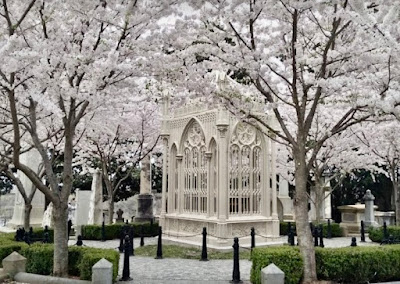 |
| Click to enlarge. |
Masonic and political history will be celebrated tomorrow, the 267th anniversary of the birth of Brother Freemason and U.S. President James Monroe.
Since the last century, the James Monroe Memorial Foundation has helped to host this historic event. We invite you to our public ceremonies and the luncheon reception to follow.
New York Governor Daniel Tompkins served as Monroe’s Vice President during his entire administration. Tompkins was also the first Sovereign Grand Commander of the Northern Jurisdiction, Ancient and Accepted Scottish Rite [as well as Grand Master of the Grand Lodge of New York]. In commemoration of this bond, the James Monroe Memorial Foundation has offered the Scottish Rite Guard of the Richmond Valley, Ancient and Accepted Scottish Rite, the honor of providing a Color Guard for the Memorial Wreath Laying Ceremony at Monroe’s Tomb. This event is open to the public.
 |
| James Monroe Memorial Foundation |
The Foundation says “re-interred” because Monroe died in New York City on July 4, 1831 at his daughter’s home and his remains were later removed to Richmond—another New York-Virginia connection in Monroe’s story—and buried again on July 5, 1858.





















































































